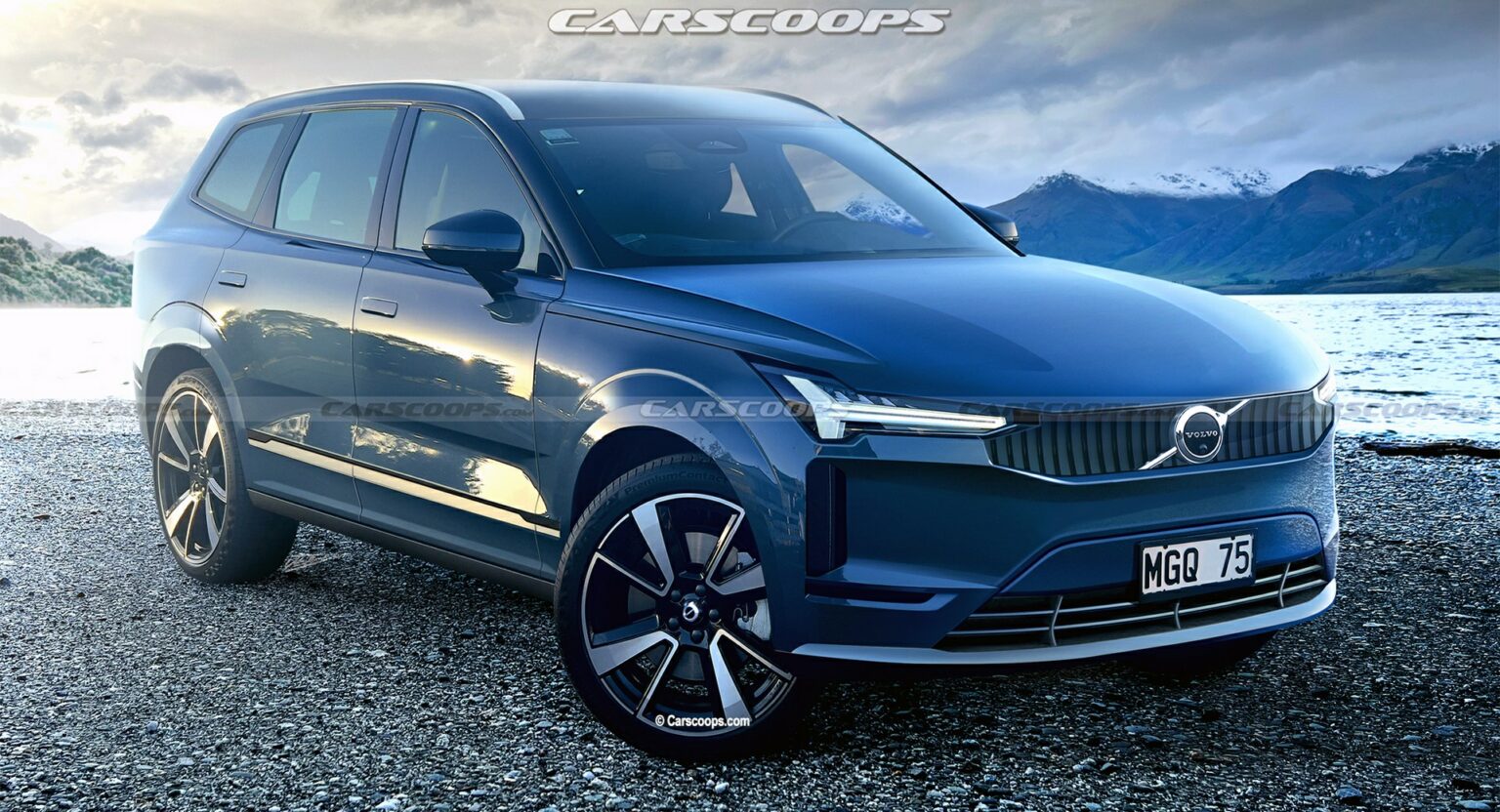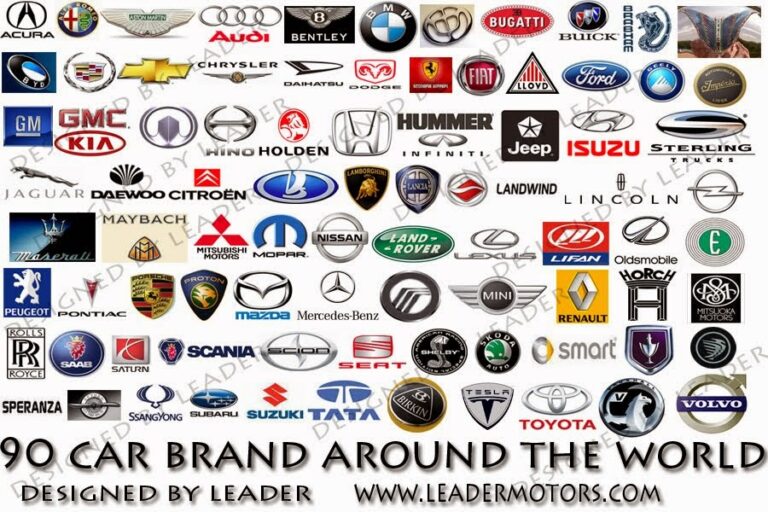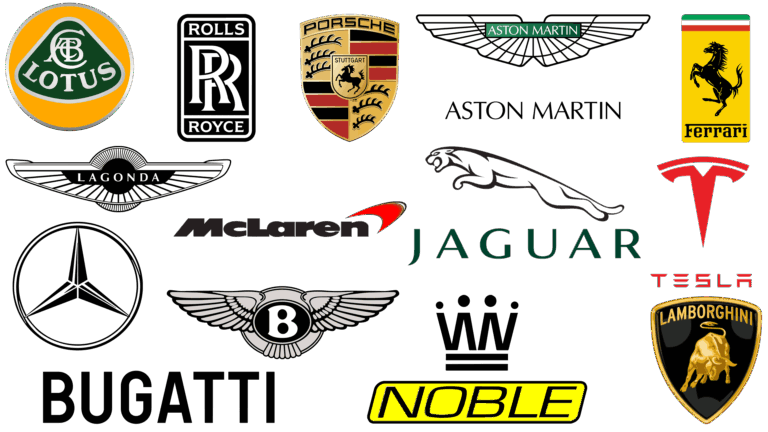Volvo Cars Car Brands: A Deep Dive into an Iconic Automotive Identity
Volvo Cars Car Brands: A Deep Dive into an Iconic Automotive Identity cars.truckstrend.com
The title "Volvo Cars Car Brands" might, at first glance, suggest an exploration of multiple automotive marques operating under the Volvo Cars umbrella. However, it’s crucial to clarify from the outset: Volvo Cars itself is the renowned car brand. Unlike automotive conglomerates that own a portfolio of distinct brands (e.g., Volkswagen Group owning Audi, Porsche, Skoda; Stellantis owning Fiat, Peugeot, Chrysler), Volvo Cars primarily focuses its efforts and identity on its singular, globally recognized brand – Volvo.
This article will therefore serve as a comprehensive guide to understanding what truly constitutes the "Volvo Cars Car Brand." We will delve into its rich history, explore the core pillars that define its unique identity, clarify its relationships with other entities like Polestar and its parent company Geely, and distinguish it from the broader Volvo Group. Our aim is to provide a detailed perspective on what makes Volvo Cars a distinct and influential player in the global automotive landscape, offering practical insights for anyone interested in this iconic Swedish marque.
Volvo Cars Car Brands: A Deep Dive into an Iconic Automotive Identity
The Genesis and Evolution of the Volvo Cars Brand
The story of Volvo Cars began in Gothenburg, Sweden, in 1927, founded by Assar Gabrielsson and Gustaf Larson. Their vision was simple yet profound: to build cars that could withstand the harsh Swedish climate and challenging road conditions. This foundational principle immediately ingrained a core value into the brand’s DNA: safety. From its earliest models, Volvo prioritized robust construction and innovative safety features, a commitment that would become synonymous with its name worldwide.
Over the decades, Volvo Cars consistently pioneered advancements that reshaped the automotive industry. It introduced the laminated windshield in 1944, the three-point safety belt as standard in 1959 (a design they famously opened the patent for, allowing other manufacturers to use it freely), and later, features like side impact protection systems (SIPS), whiplash protection systems (WHIPS), and integrated child booster seats. This unwavering dedication to protecting occupants not only built an unparalleled reputation for safety but also established Volvo as a moral compass in automotive design.
While safety remained paramount, the brand also evolved its design language, embracing the clean, functional, and aesthetically pleasing principles of Scandinavian design. Its vehicles became known for their understated elegance, ergonomic interiors, and thoughtful practicality. Ownership transitions, including a period under Ford Motor Company from 1999 to 2010, saw global expansion and technological integration. However, it was the acquisition by Zhejiang Geely Holding Group of China in 2010 that truly marked a new chapter, injecting significant investment while preserving Volvo’s distinct brand identity and engineering independence. This period ushered in a new era of platform sharing, electrification, and digital innovation, propelling Volvo Cars into the 21st century with renewed vigor.
Core Pillars Defining the Volvo Cars Brand Identity
The strength of the Volvo Cars brand lies in its unwavering commitment to a set of core values that resonate deeply with consumers. These pillars are not just marketing slogans; they are embedded in every aspect of the company’s operations, from design and engineering to corporate philosophy.
1. Unrivaled Safety Leadership
Safety is not merely a feature for Volvo; it is the very bedrock of its brand. For decades, Volvo has led the industry in developing and implementing groundbreaking safety technologies. Beyond passive safety (crashworthiness, airbags), Volvo has been at the forefront of active safety systems designed to prevent accidents from happening in the first place. This includes sophisticated autonomous emergency braking, lane-keeping assistance, blind-spot monitoring, and pedestrian/cyclist detection systems. Their long-term vision, "Vision 2020," aimed for zero fatalities or serious injuries in new Volvo cars, pushing the boundaries of what’s possible in automotive safety. This enduring commitment builds profound trust and loyalty among its customers.

2. Pioneering Sustainability and Environmental Responsibility
In an increasingly environmentally conscious world, Volvo Cars has positioned itself as a leader in sustainability. The brand has committed to becoming a climate-neutral company by 2040 and aims for 50% of its global sales to be fully electric cars by 2025, with the remainder being hybrids. This involves not only developing a robust line-up of electric and plug-in hybrid vehicles but also focusing on sustainable manufacturing processes, reducing supply chain emissions, and using recycled and bio-based materials in their vehicles. Their transparent approach to lifecycle emissions and efforts to reduce plastic waste underscore a genuine commitment to a greener future, appealing to environmentally aware consumers.
3. Scandinavian Design and Human-Centricity
Volvo’s design philosophy is rooted in the principles of Scandinavian minimalism: clean lines, functional elegance, and a focus on human well-being. Interiors are crafted to be serene, intuitive, and comfortable, prioritizing natural materials, ergonomic layouts, and advanced air purification systems. The design is never superfluous; every element serves a purpose, contributing to a calm and uncluttered environment. This human-centric approach extends beyond aesthetics to the user experience, with intuitive infotainment systems and thoughtful storage solutions, creating a sense of calm and control for the driver and passengers.
4. Innovation and Technology for a Better Life
While not chasing technology for technology’s sake, Volvo integrates innovation that genuinely enhances the driving experience and improves lives. This includes advanced connectivity features, intuitive infotainment powered by Google’s Android Automotive OS, sophisticated driver-assistance systems that pave the way for autonomous driving, and advanced air quality systems. Their innovation is always purposeful, aiming to make cars safer, smarter, and more enjoyable to live with, rather than simply adding complexity.
The Volvo Ecosystem: Clarifying "Car Brands" Relationships
To fully understand the "Volvo Cars Car Brand," it’s essential to differentiate it from other related entities that might lead to confusion about multiple "brands."
Volvo Cars vs. AB Volvo (The Volvo Group)
Perhaps the most significant distinction to make is between Volvo Cars and AB Volvo (The Volvo Group). Historically, they were part of the same company. However, in 1999, Volvo Cars was sold to Ford Motor Company, effectively separating the passenger car division from the rest of the Volvo conglomerate. AB Volvo (The Volvo Group) retained its focus on commercial vehicles and industrial equipment, including:
- Volvo Trucks: Heavy-duty trucks and transport solutions.
- Volvo Buses: Buses for public transport and tourism.
- Volvo Construction Equipment: Machinery for construction and related industries.
- Volvo Penta: Marine and industrial engines.
- Volvo Financial Services: Financial services for the Volvo Group’s products.
So, while both carry the "Volvo" name, they are entirely separate corporate entities with different ownership structures and product portfolios. Volvo Cars makes passenger cars; AB Volvo makes everything else with the Volvo name.
Volvo Cars and Polestar: A Symbiotic Relationship
Polestar is the closest entity one might consider a "sister brand" or a "performance sub-brand" to Volvo Cars. Initially, Polestar was Volvo’s official performance partner, much like AMG is to Mercedes-Benz or M is to BMW. In 2017, Volvo Cars and Geely spun Polestar off into a standalone, premium electric performance car brand.
While now independent, Polestar maintains very strong ties to Volvo Cars. They share technology, manufacturing facilities, design philosophies, and even retail spaces in some markets. Polestar vehicles often use platforms and components developed by Volvo Cars (e.g., the Polestar 2 shares its CMA platform with the Volvo XC40). This relationship allows Polestar to leverage Volvo’s engineering prowess and safety legacy while focusing purely on high-performance electric vehicles. So, Polestar is a distinct brand, but one born from and deeply intertwined with Volvo Cars.
Volvo Cars and Geely: Ownership, Not a Sub-Brand
Since 2010, Volvo Cars has been owned by Zhejiang Geely Holding Group (Geely), a Chinese multinational automotive company. However, it’s crucial to understand that Volvo Cars operates with a high degree of autonomy. Geely’s strategy has been to invest heavily in Volvo’s research and development, allowing the Swedish brand to flourish and develop new platforms (like SPA and CMA) and technologies that are sometimes shared across the broader Geely portfolio (e.g., with Lynk & Co, Zeekr).
Geely does not position Volvo as a "sub-brand" within its own structure. Instead, Volvo Cars functions as a premium, independent brand under Geely’s ownership, benefiting from shared resources and scale while maintaining its distinct identity, headquarters in Sweden, and management team. This ownership structure has been largely beneficial, providing the capital needed for Volvo Cars to innovate and compete globally.
Practical Advice and Actionable Insights for the Reader
For those considering a Volvo or simply curious about the brand, here’s some practical advice:
- Prioritize Safety and Peace of Mind: If safety is your paramount concern, Volvo cars are consistently among the safest vehicles on the road. Their commitment goes beyond regulatory requirements.
- Embrace Scandinavian Luxury: Expect an interior that is understated, comfortable, and intuitive, rather than overtly flashy. It’s about quiet luxury and thoughtful design.
- Consider Electrification: Volvo is rapidly transitioning to an all-electric future. Explore their Recharge models (fully electric or plug-in hybrid) for a blend of performance, efficiency, and sustainability.
- Test Drive Multiple Models: Volvo offers a range from compact SUVs (EX30, XC40) to mid-size (XC60) and large SUVs (XC90), sedans (S60, S90), and wagons (V60, V90). Each has a distinct character while sharing the core Volvo DNA.
- Understand Ownership Costs: While Volvo vehicles are premium, consider their strong residual values, comprehensive warranty, and potential for lower running costs with electrified models.
- Explore Subscription Services: Volvo offers a "Care by Volvo" subscription service in some markets, providing a flexible alternative to traditional ownership with an all-inclusive monthly fee.
- Check for Software Updates: Volvo’s infotainment system (especially those with Google Built-in) benefits from over-the-air updates, ensuring your car stays current with the latest features and improvements.
Potential Challenges and Solutions for the Volvo Cars Brand
Despite its strengths, Volvo Cars faces common challenges in the dynamic automotive industry:
- Intense Competition: The premium segment is highly competitive, with established German rivals and emerging electric vehicle startups.
- Solution: Continuous innovation in safety, sustainability, and technology, coupled with distinctive design and a strong brand narrative, helps Volvo stand out.
- Transition to Electrification: Shifting an entire product portfolio to electric vehicles is capital-intensive and requires significant retooling and supply chain adjustments.
- Solution: Leveraging Geely’s investment and global scale, developing dedicated EV platforms, and securing battery supply agreements are crucial.
- Maintaining Brand Identity Under Foreign Ownership: Ensuring that the Swedish essence and values remain intact while operating under Chinese ownership is an ongoing balancing act.
- Solution: Geely’s hands-off approach and commitment to Volvo’s independence have largely mitigated this, allowing Volvo to retain its distinct character and headquarters in Sweden.
- Market Perception in New Territories: While established in Western markets, building brand recognition and trust in rapidly growing emerging markets can be a challenge.
- Solution: Tailoring product offerings, expanding dealer networks, and highlighting universal values like safety and sustainability can help penetrate new markets.
Price Table: Representative Volvo Cars Models (Estimated Starting MSRP in USD)
This table provides estimated starting Manufacturer’s Suggested Retail Prices (MSRP) for popular Volvo Cars models in the U.S. market, as of late 2023/early 2024. Prices can vary significantly based on trim level, options, region, and model year. Please consult official Volvo Cars websites for the most current and accurate pricing.
| Model Category | Model Name | Drivetrain Type | Estimated Starting MSRP (USD) | Key Features Embodying Volvo Brand |
|---|---|---|---|---|
| Compact SUV | EX30 | Fully Electric | $34,950 | Smallest carbon footprint, minimalist design, urban agility, advanced safety features. |
| XC40 | Mild Hybrid / Pure Electric | $36,350 (Mild Hybrid) / $53,600 (Pure Electric) | Compact versatility, bold design, high seating position, comprehensive safety tech, Google Built-in infotainment. | |
| Mid-Size SUV | XC60 | Mild Hybrid / Plug-in Hybrid | $46,800 (Mild Hybrid) / $59,300 (Plug-in Hybrid) | Balanced performance, elegant design, comfortable interior, advanced driver-assistance systems, premium audio options. |
| Large SUV | XC90 | Mild Hybrid / Plug-in Hybrid | $57,100 (Mild Hybrid) / $71,900 (Plug-in Hybrid) | Seven-seat family luxury, commanding presence, ultimate safety suite, sophisticated interior, flagship model. |
| Sedan | S60 | Mild Hybrid / Plug-in Hybrid | $42,650 (Mild Hybrid) / $52,800 (Plug-in Hybrid) | Dynamic driving, sleek profile, comfortable and quiet cabin, advanced safety, Harman Kardon audio available. |
| Wagon | V60 Cross Country | Mild Hybrid | $50,100 | All-road capability, classic wagon practicality, elevated ground clearance, versatile cargo space, rugged elegance. |
| V90 Cross Country | Mild Hybrid | $59,800 | Premium wagon experience, luxurious interior, exceptional comfort, standard AWD, ideal for long journeys. |
Note: "Mild Hybrid" models combine a gasoline engine with an electric motor for improved efficiency and performance. "Plug-in Hybrid" (Recharge models) offer a significant electric-only range before switching to hybrid mode. "Pure Electric" (Recharge models) are battery-electric vehicles with zero tailpipe emissions.
Frequently Asked Questions (FAQ) about Volvo Cars
Q1: Is Volvo Cars owned by a Chinese company?
A1: Yes, Volvo Cars has been owned by Zhejiang Geely Holding Group (Geely) of China since 2010. However, Volvo Cars operates with a high degree of autonomy, maintaining its headquarters in Sweden and its distinct brand identity.
Q2: Is Polestar part of Volvo Cars?
A2: Polestar was spun off from Volvo Cars in 2017 to become a standalone, premium electric performance car brand. While independent, Polestar maintains very strong ties to Volvo Cars, sharing technology, manufacturing facilities, and design philosophies.
Q3: What is the difference between Volvo Cars and Volvo Group (AB Volvo)?
A3: Volvo Cars manufactures passenger cars (SUVs, sedans, wagons). AB Volvo (the Volvo Group) is a completely separate company that focuses on commercial vehicles and industrial equipment, including trucks (Volvo Trucks), buses (Volvo Buses), construction equipment, and marine engines (Volvo Penta). They separated in 1999 when Volvo Cars was sold to Ford.
Q4: Are Volvo cars still considered safe?
A4: Absolutely. Safety remains the core pillar of the Volvo Cars brand. They consistently rank among the safest vehicles globally and continue to innovate with advanced active and passive safety features.
Q5: Is Volvo committed to electric vehicles?
A5: Yes, Volvo Cars has one of the most ambitious electrification strategies in the automotive industry. They aim for 50% of their global sales to be fully electric cars by 2025 and plan to become an all-electric car company by 2030, with a goal of climate neutrality by 2040.
Q6: Where are Volvo cars manufactured?
A6: Volvo Cars has manufacturing plants in Sweden (Torslanda), Belgium (Ghent), China (Chengdu, Daqing, Taizhou), and the United States (Ridgeville, South Carolina).
Q7: What does "Recharge" mean in Volvo’s model names?
A7: "Recharge" is Volvo’s sub-brand for its electrified vehicles, specifically its fully electric (EV) and plug-in hybrid (PHEV) models.
Concluding Summary: The Enduring Strength of the Volvo Cars Brand
In conclusion, while the phrase "Volvo Cars Car Brands" might initially suggest a portfolio of different marques, the reality is a testament to the singular, powerful identity of Volvo Cars itself. It is a brand that has meticulously built its reputation over nearly a century, founded on an unwavering commitment to safety, refined by elegant Scandinavian design, propelled by a pioneering spirit in sustainability, and enhanced by purposeful innovation.
Volvo Cars is not just a manufacturer; it is a philosophy on wheels. Its relationship with Polestar showcases a strategic spin-off into the performance EV space, while its ownership by Geely demonstrates a successful model of preserving brand autonomy and identity within a larger corporate structure. The clear distinction from AB Volvo (the Volvo Group) further underscores its unique focus on passenger vehicles.
For consumers, the Volvo Cars brand represents a promise of security, comfort, environmental responsibility, and a sophisticated driving experience. It continues to evolve, embracing electrification and digital transformation, yet always remaining true to its core values. In a crowded automotive landscape, the Volvo Cars brand stands as a beacon of thoughtful engineering and human-centric design, solidifying its place as a truly iconic and enduring automotive identity.




